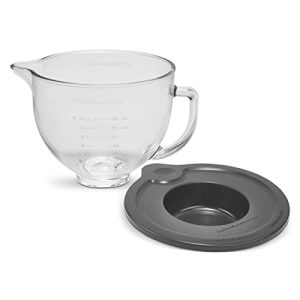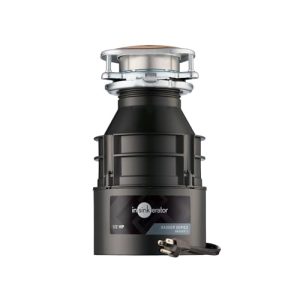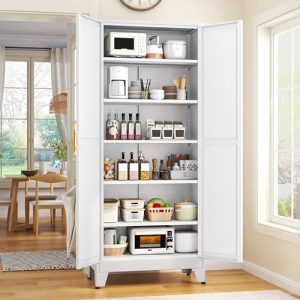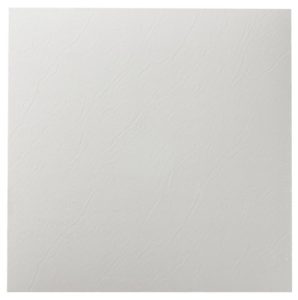Your kitchen knife is one of the most important tools you have. When it’s sharp, cutting feels smooth and effortless.
But when it’s dull, chopping becomes frustrating and even dangerous. You might think sharpening a knife is hard or messy, but it doesn’t have to be. You’ll discover simple, effective ways to sharpen your kitchen knife at home. By the end, you’ll know how to keep your blade razor-sharp, making your cooking faster, safer, and more enjoyable.
Ready to bring your knife back to life? Let’s get started.
Choosing The Right Sharpening Tools
Choosing the right sharpening tool can make a huge difference in how effectively and safely you sharpen your kitchen knives. The variety of options available can be overwhelming, but understanding each tool’s purpose helps you pick what fits your needs and skill level. Let’s break down the main types of sharpening tools to guide you in making an informed choice.
Whetstones And Their Types
Whetstones are traditional sharpening stones that come in different grit levels. Coarse grits (200-600) are used to fix chips or reshape blades, medium grits (800-1500) refine the edge, and fine grits (3000 and above) polish the blade to a razor finish.
If you enjoy hands-on work and want precise control, whetstones offer that tactile feedback. They require practice to maintain the correct angle, but once mastered, they can give your knives an exceptionally sharp edge.
Honing Rods And Their Uses
Honing rods, often mistaken for sharpeners, are mainly used to realign a knife’s edge between sharpenings. They don’t remove much metal but keep your blade straight and effective.
Using a honing rod regularly can extend the time between full sharpenings. You’ll notice your knife slicing more smoothly after a few gentle strokes along the rod.
Electric Sharpeners: Pros And Cons
Electric sharpeners offer convenience and speed, making them popular in busy kitchens. They usually have preset angles and multiple stages for coarse and fine sharpening.
- Pros:Quick results, easy to use, minimal skill required.
- Cons:Can remove too much metal, potentially shortening your knife’s lifespan, and sometimes lack precision.
Think about how often you cook and sharpen your knives. If you prefer a fast fix and don’t mind sacrificing some blade life, an electric sharpener could be worth it. Otherwise, manual tools might give you better control and longer-lasting edges.
Preparing Your Knife For Sharpening
Preparing your kitchen knife for sharpening is a crucial step. Proper preparation ensures better results and safety. It helps you avoid damage to the blade and sharpener. Follow these simple steps to get your knife ready.
Cleaning And Inspecting The Blade
Start by washing the knife with warm water and mild soap. Remove any food particles or grease. Dry the blade completely using a soft cloth. Check the blade for chips, rust, or deep scratches. Small imperfections can affect sharpening. Note any damage that might need special care.
Setting Up A Safe Sharpening Area
Choose a flat, stable surface to sharpen your knife. Make sure the area is well-lit and free from distractions. Keep a towel or non-slip mat under the sharpening tool. This prevents slipping and protects your countertop. Arrange all sharpening tools within easy reach. Safety first—keep fingers and hands clear of the blade edge.
Sharpening Techniques
Sharpening a kitchen knife keeps it cutting smoothly and safely. Use a whetstone or sharpening tool at the correct angle for best results. Regular sharpening extends the knife’s life and improves kitchen efficiency.
Sharpening your kitchen knives is a crucial skill that can elevate your cooking experience. A sharp knife not only makes cooking more efficient but also safer, reducing the risk of slips and accidents. Let’s delve into some effective sharpening techniques that ensure your knives remain in peak condition.Using A Whetstone Step-by-step
The whetstone, often considered the purist’s choice, offers a precise way to sharpen your knives. Start by soaking the whetstone in water for about 10 to 15 minutes until air bubbles stop rising. This ensures the stone is adequately lubricated. Place the stone on a stable surface, with the coarse side facing up. Hold the knife at a consistent 20-degree angle against the stone. This angle is crucial—too steep and you’ll damage the blade; too shallow and you won’t sharpen effectively. Using steady pressure, glide the blade across the stone from heel to tip. Repeat this motion 5 to 10 times on each side. As you sharpen, you’ll feel a burr forming, which is a good indicator that you’re removing enough material from the edge.Honing To Maintain Edge
Honing isn’t the same as sharpening, but it’s just as vital. Honing aligns the blade’s edge, keeping it sharp between sharpening sessions. Use a honing rod, holding it vertically on a stable surface. Position the knife at a 15-degree angle against the rod. Lightly draw the blade down the rod, alternating sides with each pass. Honing should be a regular part of your kitchen routine. A few strokes before cooking can make all the difference in maintaining a razor-sharp edge.When To Use Electric Sharpeners
Electric sharpeners offer convenience and speed, perfect for busy home cooks. However, they can be aggressive, removing more metal than necessary if used frequently. Consider an electric sharpener if your knives are severely dull or if you lack the time for manual sharpening. These devices are user-friendly, often with guides to ensure the correct angle. Keep in mind, though, that while electric sharpeners are efficient, they might not provide the precision of a whetstone. Use them sparingly to prolong the life of your knives. Are your knives performing at their best, or could they use a sharpening session? Embrace these techniques and bring out the best in your kitchen tools.Maintaining Your Knife After Sharpening
Keeping your kitchen knife sharp takes care beyond just sharpening. Proper maintenance helps your blade last longer and stay effective. After sharpening, follow simple steps to protect your knife’s edge and overall quality.
Proper Cleaning And Storage
Clean your knife right after use. Use warm water and mild soap. Avoid harsh detergents that can damage the blade. Dry the knife completely with a soft cloth. Never leave it wet or soak it in water. Store the knife in a safe place like a knife block or magnetic strip. Avoid tossing it in a drawer where it can get dull or damaged.
Regular Honing Schedule
Honing keeps your knife edge straight and sharp between sharpenings. Use a honing steel every few uses. Hold the steel vertically and swipe the knife blade at a 20-degree angle. Do this on both sides of the blade, about five times each. Honing does not remove metal but realigns the edge. This simple routine saves time and keeps your knife ready for cutting.
Common Mistakes To Avoid
Sharpening a kitchen knife seems easy but many make common mistakes. These errors can damage the blade or cause injury. Avoiding these pitfalls ensures your knife stays sharp and safe to use.
Over-sharpening And Blade Damage
Sharpening too often wears down the blade quickly. Thin edges become weak and may chip or bend. Use sharpening tools only when the blade feels dull. Too much sharpening reduces the knife’s lifespan and effectiveness.
Incorrect Angle Handling
Holding the knife at the wrong angle prevents a sharp edge. Each knife has an ideal angle, often between 15 and 20 degrees. Too steep or too flat an angle causes uneven sharpening. Practice keeping the angle steady for best results.
Skipping Safety Precautions
Sharpening involves sharp edges and abrasive surfaces. Skipping safety steps risks cuts and accidents. Always use a stable surface, wear cut-resistant gloves, and keep fingers away from the blade. Take your time and stay focused to avoid injuries.
Signs Your Knife Needs Sharpening
Recognizing when your kitchen knife needs sharpening is key to safe and efficient cooking. A dull knife can slow down meal prep and cause accidents. Watching for clear signs helps you know the right time to sharpen your blade. These signs often go unnoticed until your knife struggles with simple tasks.
Testing Sharpness At Home
Try slicing a sheet of paper. A sharp knife cuts cleanly without tearing. If the blade slips or tears the paper, it needs sharpening. Another test is slicing a tomato. A sharp knife cuts through the skin smoothly. If you press hard or the skin squashes, the knife is dull. You can also gently run the blade on your thumbnail. A sharp edge will catch slightly, while a dull one slides off.
Performance Indicators In Cooking
Notice if cutting vegetables takes more effort than usual. A dull knife crushes rather than slices. Meat and herbs also show signs of dullness. The knife might tear or mash instead of clean cuts. If your fingers feel more strain during chopping, the blade likely needs sharpening. Clean, smooth cuts save time and improve food presentation.
Frequently Asked Questions
How Often Should I Sharpen My Kitchen Knife?
Sharpen kitchen knives every 1-3 months, depending on use frequency. Regular sharpening maintains cutting efficiency and safety. Frequent cooks may need monthly sharpening, while occasional users can sharpen less often. Always hone between sharpening to keep edges aligned and extend sharpness.
What Tools Are Best For Sharpening Kitchen Knives?
Use whetstones, sharpening rods, or electric sharpeners for kitchen knives. Whetstones offer precise control and sharp edges. Sharpening rods maintain edges daily. Electric sharpeners are quick but may remove more metal. Choose tools based on skill level and knife type.
Can I Sharpen Kitchen Knives At Home Safely?
Yes, sharpening kitchen knives at home is safe with proper tools. Follow instructions carefully and maintain a consistent angle. Use a non-slip surface to prevent accidents. Practice patience and avoid rushing to protect both the blade and yourself.
What Is The Ideal Angle For Sharpening Kitchen Knives?
The ideal sharpening angle for kitchen knives ranges from 15° to 20°. Asian knives usually have a 15° angle for finer edges. Western knives commonly use 20° for durability. Maintaining a consistent angle ensures a sharp and long-lasting blade.
Conclusion
Sharpening a kitchen knife keeps it safe and easy to use. Regular care helps knives cut smoothly every time. Using the right tools makes the job quick and simple. Practice a little to get a steady hand. A sharp knife saves effort and protects your food.
Keep your blades sharp for better cooking results. Small steps lead to big improvements in your kitchen. Try these tips to keep knives ready for any meal.

Sophie Hartwell is the founder of KitchenQuik.com, where she shares kitchen tips, smart cooking hacks, and the best product picks to make everyday cooking easier and more enjoyable.




